Avid bleaders know that I collected, sorted, described, and analyzed one year’s worth of junk mail in the letter box at the Ack-comedy in Newtown.
The totals were impressive and depressing, the more so when multiplied by the number of postal addresses in Newtown. Several tons of unread material each month.
Now that I knew the world, I set about changing it. (An echo of one of Karl Marx’s more declamatory remarks.)

I had thought to stem the tide of junk mail in my own letterbox and then promote that method to others in the name of the Junk Mail Liberation Movement, of JuM_LiM, as I styled it. Some organization, effort, and persistence would pay off, I thought. Hope makes fools of us all. (Hark, that is Aristotle at a far remove.)
In the action phase, I started to keep a register of every item of junk mail in my letter box, sending it back to its origin with a letter, email, or note asking that no future items be delivered to my box number…. I did not expect it to be easy but I am made of stern stuff, after all I sat through StarTrek Into the Darkness. After that experience, anything seems easy.
I registered the first fifty items I received over a two-month period. A direct approach with a personal request, phrased ever so politely, would get attention, and lead to action. Well, that is what I thought. Hope, it deceives all.
Indeed I had feedback from one of the first I contacted that was contrite and apologetic. Ah ha, thought I, this is the right track. That was a King Street estate agent.
Not to be. Within a week I got another junk drop from that very same estate agent. There are many agents in the office and though one was contrite the others happy trespassed on my letter box to dump their junk.
In another case, since the junk drops were every two weeks, I sent three letters to one local restaurant asking to be excluded from the junk drops. To no avail. They just kept coming.
I sometimes used the Contact Us feature on web sites, or direct email. In other cases I found a postal address, either on the company web site or in the online telephone book, and sent a letter. Some web sites had no address, no email, and no Contact Us, but only a phone number and I drew the line there. No telephone calls. Nor would I go to the local restaurant (ever again) and demand exclusion. The exercise is not about confrontation, but rather to try to find a user-friendly way to diminish the tiresome tide of junk dumped in the letter box.
I also searched the web for ideas. Australia Post, amid denials that it ever delivers junk mail, suggests a No Junk Mail sticker. Tried that. For the Hair Splitters I added a No Unaddressed Advertising Material sticker. I also studied the Australian Catalogue Association web site. Its advice was focussed on addressed catalogues, as was the Australia Post web site. This advice is repeated on many other green web sites, as if it does any good, such is the paucity of creative thinking. Addressed catalogues are not the problem.
There are many web site offering a variety of No Junk Mail stickers but none that evaluate the effect of this stickers. I have it is only slightly greater than 0, but not much. Harvey Norman and Mitre Ten junk mail walkers respect my sign but not any others.
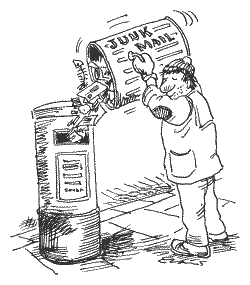
The problem is individual flyers from all manner of small businesses. The problem is not catalogues from major retailers, at least not any more.
But I did notice when I looked further afield that in both Britain and the United States there are more resources to a householder in the resistance to junk mail. The letter box is, after all, private property, and throwing one’s trash into it is a trespass. That conclusion has been reached in some jurisdictions in Great Britain. The United States Postal Service has also been vigorous in preventing interference with the mails, e.g., letter boxes stuffed with junk so that the mail cannot be inserted. All of that is better than nothing, but it does not seem to have much effect in either country.
Indeed I have seen that the cataloguers from major retailers in Australia argue that their catalogues are read by recipients (usually based on survey of shareholders’ households, always inspect the data). Be that as it may, the major retailers in my case do respect the No Junk Mail stickers. It is the local, minor retailers who do not.
In that debate I noticed that the industry association for producing the paper that the junk mail is on, also has lobbied against any legislation that would diminish the amount of junk mail in Australia. Think about that. It’s jobs…first to make the paper and then to dispose of it. Largely unproductive and more than a little destructive work, but work all the same. In the same vein I found a few angry diatribes from individuals who claim to derive a livelihood as a junk mail walker defending their right to dump trash in my letter box, and denouncing any complaint as a threat to their livelihood.
No doubt some hardworking Germans said the same about gas chambers.
What I was looking for was some way to report the offenders, if for no other purpose than social awareness. I found no recourse available in Sydney, in New South Wales, or in Australia.
In the end, a few weeks ago I gave up this round of my war on junk mail and scrapped the register I was keeping in a spreadsheet. This is a truce, not a peace. It is round two with the prospect of a round three reserved.
Glossary
A bleader is a reader of a blog.
The Ack-comedy is my private office in Newtown.
Month: October 2013
Barbara (2012)
A character study set in the German Democratic Republic (DDR) of 1980. Understated, muted, ambiguous, spare, unadorned, and demanding. Recommended for adults.

Dr. Barbara Wolfe applies for an exit visa to leave the Workers’ Paradise that is the German Democratic Republic. Verboten! She is transferred from the prestigious East Berlin university clinic to an under-equipped small hospital on the Baltic Coast. Her visa request is denied. We piece this together from cryptic remarks and visuals. There is no exposition. One is left to infer the meaning of what one sees. Nor is there music. Instead there are winds in the trees and the distant sea and the creak of floorboards.
Rejection and transfer confirm her desire to leave.
Meanwhile, at the provincial hospital she sees the next generation being ground down by the regime. Dr Wolfe befriends a young girl who has repeatedly escaped from a nearby Labor Camp. Quick to apply the regime-approved label, the physicians suppose she is anti-social, seeking only to avoid work. Dr Wolfe finds that she has meningitis and sets about treating her. She also observes the consequences of a young boy’s attempted suicide. His attempt was born from a love affair but it becomes a crime against the state and when he recovers he, too, will go to another labor camp. Wolfe says these ‘Arbeitlagers’ are in fact ‘Sozialistische exterminaiton Lagern.’ I am sure readers can work that out.
Everything is the business of the STATE in this world.
Throughout Dr Wolfe is harassed by the police, and I mean harassed! Throughout she distrusts her new colleagues and they reciprocate. It is a society where everyone reports on everyone else, perhaps like North Korea today.
The paramount importance of the East German state justified its totalitarianism but totalitarians will always find a paramount cause to justify telling everyone else how to live be they self-righteous Greens or God-bothering Christians. One totalitarian is pretty much like another.
In time Barbara Wolfe comes to terms with her Sisyphean existence and concentrates on her work.
There is a remarkable scene when the Stasi officer comforts his wife that shows a humanity I have never before seen credited to agents of the DDR on screen since 1989. I thought that more striking than the self-abnegation at the end, surprising as that was. Wikipedia has it that as many as 4,000 East Germans died in the Baltic Sea trying to get to Denmark.
To find out more about life in the DDR I recommend Timothy Garton Ash, The File: A Personal History (Random House, 1997). Many who have commented on this film on the Internet Movie Data Base know nothing of the DDR, it would seem.
In 1980 pin-headed intellectuals in the West routinely denounced the evils of liberal-democracy, while enjoying its fruits, and defended regimes even worse than the DDR. I have yet to hear a mea culpa from these sycophants.
By the way, the past is still with us. The Wikipedia entries on the DDR are contested. Its apologists insert and insist on its merits, denying the facts of their own lives at times, it seems, such is the power of a dream, albeit totalitarian. Perhaps the most profound judgement on the DDR lies in this fact: from 1947 to 1989 its population shrank from 19 million to 16 million. As the young girl says, in effect, in Barbara this is no place to be born.
A small quibble: Nina Hoss’s eye shadow, if I have the term right, was distracting and out of place. I cannot imagine the exiled women in the DDR has the means, the time, the motivation to apply blue eye shadow to get that Cleopatra look.
Les Saveurs du Palais
Times are tough in her one-woman restaurant and when the offer comes to cook for a senior official in Paris for a couple of years at an incredible salary, Hortense takes the bait. I particularly liked the stunned silence when she is told that Joël Robuchon recommended her. (It is like being recommended by Zeus, a higher being.) Soon enough she realizes she is cooking for the President of France (loosely based on François Mitterand) in the Élysée Palace at 55 rue de Saint Honoré.
Recommended for adults.
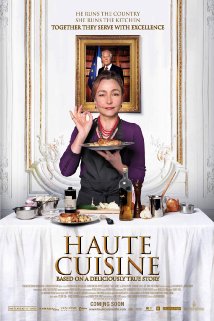
There are some insights into the workings of the Building and its many thousands of employees, with some amusing, perhaps alarming scenes for taxpayers, examples of the waste caused by a ten minute delay in a departure for the airport. There is the inevitable tension between different departments within the household.

Hortense’s mission is to cook for the President in a simple way to give him a contrast to the formal, state dinners with their elaborate sauces, etc. Yet she has no way of knowing what the President likes, since she has no access to him, so she examines his plate when it is brought back from the table and infers from that.
The men in the main kitchen, they are all men, resent the existence of this small private kitchen in the residential wing do all they can to undermine it. All too believable. They would do this in any case but that the private cook is an unknown women triples their efforts.
She struggles, not always with success, to limit cost, achieve the highest quality, and stay within the dietary regime of the dying President. Meanwhile, the boys in the main kitchen carp, grudge, cheat, backbite, undermine…
It is great fun, plenty of food to drool over, and I also liked her brief excursion to the Antarctica research station to cook for the crew. There she talked to the diners, learned what they liked, enlisted their help in securing items, and enjoyed it a lot more than than the starched, constrained, combative, zero-tolerance, macho environment at Numero 55. Yes, strange though it may seem the Palace was presented as much more macho than the research station on the edge of the world, which by contrast seemed much more like a family, a large and noisy one to be sure.
While the ‘Tastes of the Palace’ makes perfectly good sense, for reasons unknown the distributor of this film have called it ‘Haute Cuisine’ in English. It is a title at odds with the major theme about food, namely that simple food is best when made from the best available produce. No doubt an advertising agency thought Haute Cuisine would appeal to some regardless of the intellectual coherence of the film.
If Woodrow Wilson had lost the 1916 election
Hypotheticals are often very entertaining, and sometimes, though rarely, informative.
Woodrow Wilson concluded in October 1916 that he would lose his bid for re-election in November against Charles Evans Hughes, the Republican nominee. As a constitutional specialist Wilson had always deplored the hiatus between the early November election and the inauguration of the new president in March of the following year. During that three month period — the lame duck period — the incumbent had no legitimate authority though the formal powers remain.
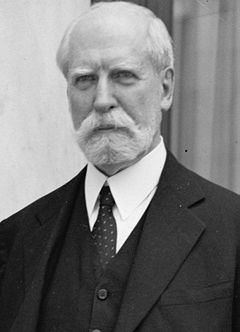
Charles Evans Hughes
In 1916 the lame duck would be no laughing matter with submarine warfare a weekly occurrence off the Atlantic coast of the United States and Europe burning in an endless war on a gigantic scale while Japan sharpened swords in the Far East and eyed Mexico. In that situation Wilson had no wish to exercise the formal powers shorn of a popular mandate. Moreover, he thought the people’s choice should take on the responsibility immediately.
He made a secret plan to accomplish that end while staying within the Constitution. Here is how he proposed to do it. As soon as it was official that Hughes had won, he would dismiss the Secretary of State, Robert Lansing. Wilson would then appoint Hughes to be Secretary of State. While Congress is not sitting the President can make acting cabinet appointments like this as a temporary expedient until Congress reconvenes. Once Hughes accepted the appointment, Wilson would ask his obliging and unambitious Vice-President Thomas Marshall to resign. Without a doubt Marshall would have readily complied. (Lansing would have almost certainly resisted but he served at Wilson’s pleasure and at the end of the day would have had no choice but to stand aside, willing or unwilling.)
With the way then clear, Wilson would himself resign, and by the existing line of presidential succession the baton would pass, absent a Vice-President, to the Secretary of State, Charles Evans Hughes who would also be President-Elect. Wilson’s supposed that this could be done within three days or even less once the election results were known. Hughes had only to travel from New York to Washington and say ‘Yes.’ Of course, Wilson hoped against hope to win, so he put the plan which he had typed himself in a desk drawer and waited.
On election day the result was close, and in 1916 reporting results was slow and sometimes uncertain since journalists sometimes jumped the gun. (No comment.)
It seemed by late evening on the East coast that Hughes had won. Hughes went to bed believing he had been elected President of the United States. But he woke up to find that California had voted for Wilson and the left coast was enough to keep Wilson in office. The secret plan went into the locked filing cabinet of history. Would a president today think so hard about the best interests of the country and be prepared to concede to an opponent to serve that interest?
In 1933 the XXth Amendment to the United States Constitution reduced the gap between the election and inauguration from early November to January and re-routed the Presidential succession, after the Vice-President, through the presiding officers of the House of Representatives and the Senate before going to the Secretary of State.
There are two competing principals. The first is that a successor should be someone aligned with the president and au fait with current developments in the executive, hence the Secretary of State as the most important cabinet office should be third in line. That principal applied until 1933, despite Secretary of State Alexander Haig’s remark when President Reagan was shot in 1981.
The second principal is that the successor should be an elected official with broad responsibilities, hence the presiding officers of the legislatures. While not members of the executive, they are engaged with the daily processes of government.
Eight of 44 presidents have died in office. In each case the successor was the VIce-President.
By the way, Hughes had a long and varied career in public service: Governor of New York, Associate Justice of the US Supreme Court, Secretary of State, Justice on the International Court of Justice, and Chief Justice of the US Supreme Court.
Ben Oxlade, Death in Brunswick
Recommended for the Melbournoisie out there. But they have all probably read it. Not a krimie, worse luck.
A two-hour diversion into the drug addled mind of ole whashisname, Cookie, Carl the cook, or is that Charles. Sometimes not even he is sure.
Cruel but insightful and amusing caricatures of the feminist wife, the Irish mother, the Greek club owner…..and Carl himself.
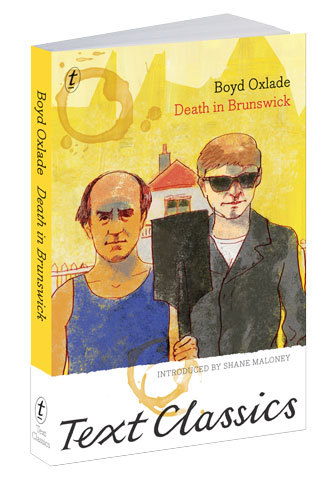
His movie review fits most of the trash on the wide screen today: deafening, gory, brain deadening, blinding… Get the result same from a finger in a power outlet!
‘They went into the theatre. it was a maelstrom of noise. The film had started….. The screen was awash with meaningless images and the soundtrack was a … frightening roar…. Creatures from his worst alcoholic nightmare, groped and slithered across the screen.’ That’s entertainment! That describes ‘Star Trek: Into the Darkness’ very well.
Quite fitting that Shane Mahoney wrote the intro. They have the same ink in their veins. Though Mahoney’s effort to compare this book to Thomas Mann’s ‘Death in Venice’ falls flat.
A google search does not return any other novels from Oxlade. A one book writer and even that book is now overshadowed by the movie in the publisher’s blurb on the back of the book has more enthusiasm for the film than the book.
Comments
A blizzard of juvenile advertisements penetrates the blog every day, between 20 and 40 a day. It is an unwelcome task to delete them. So I have barred comments for the time being to avoid this trouble. Though I welcome comments, I do not welcome spam in any form. The ratio of spam to comment must be 1000 to 1, so I decided to stop comments.
Agatha Christie, A Murder is Announced.
We went to see ‘A Murder is Announced’: A Miss Marple Mystery’ at the Sydney Theatre at Walsh Bay last night. Most enjoyable. Kate did everything after I very obliquely hinted that this play would be a fine birthday present for moi! **** Four Stars from me!
The set and cast evoked a bygone time from the 1950s. I was impressed with the way the actors looked like all those other actors in BBC dramas. The RAF mo’s, the flounced dresses, the side saddle sitting, the inspector inevitably in an raincoat… This play was so much fun, in part, because everyone in the audience knew the story, and I am sure everyone in the production assumed that. In that way it is like Swan Lake or the Iliad. There will be no surprises. Well, no big surprises, but quite a few little ones. Mitzi just about stole the show! Jane’s dead pan reply to the Inspector when rhetorically asked “Do you want my job?’ Of course, the main elements are deceits, layer after layer.
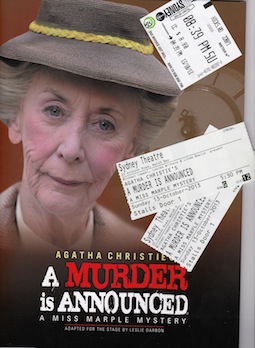
Perhaps the most curious thing in the staging was the cigarette smoking. It is in the text and was honoured here, but, as far as I could tell, only one of the actors with a cigarette puffed it like Bill Clinton. Most of the other cigarettes, after the ritual of lighting, were neither lit nor smoked. A production decision, it seems, delegated to the actors.
I have come back to Christie through the Poirot and Marple films. So meticulous, so analytic, so dogged and yet with a certain gentility of the time and place that is now relief from the too loud, too noisy, too garish, too simple, too fast, too dumb, too abrasive varieties of television policiers, most of which have the subtlety of a finger in a power point! I once read a lot of Agatha Christie but went off her in favor of the Mean Streets Noir books from Raymond Chandler, Ross MacDonald, Margaret Millar, Patricia Highsmith, and so on. The mature conclusion is both styles have a place in the pantheon.
By the way, Christie fans might like to know that she is a character in Max Collins’s The London Blitz Murders (2004).
A. Scott Berg, Wilson (2013)
Recommended to students of history, international relations, presidents, and biographies. As to the latter, this volume is an exemplar.
Woodrow Wilson was articulate, precise, committed, strong, and strove for a higher purpose than the next opinion poll. He owed nothing to anyone in politics, having entered as a clean-skin with no baggage. But he expected blind loyalty from those around him, not because they owed anything to him but because he was right! He was also one-eyed, a racist, a self-made martyr, and careless of others.
Only stereotypes are consistent and simple.
After the generations of political corruption following 1865, first Populism and then Progressive aroused the electorate. That tide lifted Wilson, first to governor of perhaps the most corrupt state of New Jersey in 1910, and then to the Democratic presidential nomination in 1912. Thanks to Teddy Roosevelt’s third party, the Republican vote was split and Wilson won. Equally, though, one might think TR split Wilson’s progressive vote. Think of Clinton, Bush adult, and Perot in 1992.
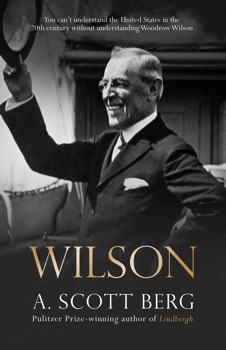
Wilson resisted the pressure to join the European war, until German unrestricted submarine warfare aroused public opinion, thanks to the irresponsible journalism of the Murdoch press, oops, the Hearst press, and his own ire. The latter was probably the more decisive of the two to Wilson. But he believed what he said, the United States entered the war to fight for a principle, unlike all the other combatants who were fighting for territory and survival, by the way that principle was the freedom of the seas. This is a foundation stone in the mystique of American Exceptionalism.
The war and the peace that followed forever defined Wilson’s administration, but before getting to that a few other things should be noted. He initiated several enduring practices: the news conference with journalists, presidential addresses to Congress, and the income tax. He appointed Louis Brandies to the Supreme Court who changed American jurisprudence. He allowed his son-in-law racially to segregate the Treasury Department which had previously been integrated in a small way. He supported female suffrage but did not think it should take the form of a constitutional amendment, though he did relent on that. He vetoed Prohibition on the same grounds.
But most of all there was first the war and then the peace. The Western Allies were in dire straits when the United States entered the war. Yet Wilson insisted that American troops would only enter into combat when they were trained and then as a unit, not as piecemeal replacements to be used by English and French commanders as cannon fodder. This insistence, made face-to-face by the United States commander Jack Pershing, led the Allies to form a single, consolidated command, after three years of unco-ordinated slaughter. That in itself was a strategic accomplishment.
Against the even more depleted Germans, when the United States Army did enter combat, fully trained and superbly equipped, it had successes that vindicated Wilson’s insistence in his own mind. He was, as usual, right.
The Peace Conference was a circus like never before. Because Wilson promised the American farm boys he sent to France to die and to become blind, diseased, paraplegic, or to suffer a long painful lingering death from mustard gas in a hospital in Ohio in 1920 that this war would be the last one, in making the peace he strove to uphold his part of that pledge.
The Fourteen Points he made the basis of American entry to the war promised to re-draw the map of most of the world, and so most of the world descended on Paris to insist that the Little Enders were the Devil’s Spawn and we Big Enders can never abide them.
Meanwhile, France in the person of Georges Clemenceau, proudly bearing the nickname ‘Tiger,’ insisted on emasculating Germany. Wilson wanted a simple treaty ending the war, and a permanent world body — the League of Nations — subsequently to work out all the details of implementing the Fourteen Points. France wanted a detailed treaty that would forever eliminate Germany as a threat to France, and finally only agreed to the League of Nations to secure American loans to rebuild Eastern France. To get the League Wilson gave way on French demands, though Wilson said at the time that these demands, unchecked, would lead to another war. Right again.
Then Wilson had to sell the League of Nations to two-thirds of the United States Senate. Opponents in the Senate thought it would embroil the United States thereafter in European politics.
In the midst of this struggle with the Senate, Wilson had a stroke and become a virtual recluse for the last years of his second term. His wife, Edith, hid his incapacity (with connivance of his physician) even from cabinet, and in time he partly recovered. Ever a small-town, many in Washington at the time referred to President Edith since she determined who saw him for many months. The petitioner would leave the matter Edith who would decide whether to show it to Wilson and, if so, she would often edit it to a few sentences. Most petitions went unanswered. In the hiatus postmasters were not appointed, zoos were closed, soldiers remained in Europe, medicine was not distributed in response to the Spanish Flu, goods piled up at ports not cleared by Customs, passenger ships could not off load travellers in harbors because Immigration officials were understaffed… Concealing his disability was unconstitutional, illegal, unethical, and probably immoral. She did it as therapy for Wilson. He had to believe he was still president to recover. Love makes us do things we would never do for ourselves. (On President Edith see Gene Smith, When the Cheering Stopped [1964]).
To this reader, Wilson was not on the job for several long periods. When Ellen died he went into a numbed shock. When he courted Edith, he could only think of her, working it the White House only an hour or two a day. He spent six month at the Paris peace talks. He was fully and partly incapacitated for six months. His two month speaking tour for the League in 1918 took him out of the White House. All of that adds up to about two years when his mind was not on the day-to-day work of the executive.
By the way, Edith attended Jack Kennedy’s inauguration in 1961 shortly before her death.
Wilson retired and then had to make a living since there was no presidential pension. He tried law but he would not take a case involving a client he disapproved of, this did not work since he disapproved of almost anyone capable of paying his fee. In the end private charity from supporters bought the Wilsons a house and an annuity.
There is a lot more to the story, but these are some of the highlights. My notes on this presidential biography run to 4,000 words. This review is an abridgement of that verbiage. The book is scrupulous about evidence and the judgements Berg offers are carefully circumscribed and limited. Altogether a book to recommend. I did think the Zimmerman Telegram got short shrift.
Gail Bowen, Murder at the Mendel (1991)
Recommended with qualifications as below.
It has an exotic setting, Saskatoon, Saskatchewan, Canada. The Canadian Prairies in January and February no less. Dry frozen.

The protagonist is a part-lecturer at the University of Saskatchewan who seems to find plenty of trouble and whose work at the University does not seem to figure largely in her day. Might be the University of Sydney that. She is a widow with two adolescent children. But we do not get bogged down in domesticity.
The good: the provincial art world is a good context, there is none of the padded descriptions I find in many alleged krimies, the characters are differentiated though not always credible (like Nina the villain). For the most part the weather is presented realistically. Sally, the artist, is well drawn, way too smart and a very charming and talented user, but first last and always a user of other people. She reminded of some people I have known.
At one point a character says: ‘In art men look for statements and women look for relations.’ Nice.
The bad: it takes 60 pages of background to get going and the reader has no clue about why to read this and what to take from it. Yes some relevant things from this opening stretch are there at the end but not 60 pages worth. While the weather is there, it does not stop people from hanging clothes on the line and our protagonist gets by for a month without a car which is impossible in such a city because there is no public transport to speak of and few taxis. I also found the dirty secret not to be so dirty though perhaps in Saskatchewan it would be hard to live down. Stuart is also less than believable and after centring on him he then disappears toward the end. A blue herring. The fresco of penises was adolescent.
First footprints – ABC television
Upon the recommendation of Jerry, guide and driver in West Arnhemland, we watched on DVD the four-part ABC documentary ‘First Footprints.‘ * * * * Highly recommended.
It is an engrossing examination of aboriginal life on Greater and Lesser Australia since time immemorial. Well, to be more specific, the 60,000 years before 1788.
It is part travelogue and part archeology with some ethnography, too, all with a light touch that lets the evidence speak for itself.
What the evidence shows is how aboriginals coped with the changing climate and the coming of the first boat people from England. They dealt with rising sea levels, epic droughts, and a changing fauna. Resilience is the word that applies.
It explores the development and transfer of technology within and among the peoples of Australia through time. A technological breakthrough in one part of Australia would be communicated to another part, three thousand kilometers away in a very few years, evidence of a continuous trade across tribal boundaries. If Joe figured out how to chip a stone tool in Sydney harbor, that knowledge would be in evidence in Geraldton within a generation.
There was so much that new and surprising to me that I cannot recount it here. We will have to watch them all again one day the better to take it in.
There is evidence of fish farming and settled agriculture in Greater Australia before the rising waters separated New Guinea and the Torres Islands. How did these primitive people do it before those advanced Europeans arrived to save their souls with gun powder and whiskey? I mimic the dreaded Erich van Däniken. The answer, Erich, is that they figured it out.
I though EvD several times on our recent tours through West Arnhemland and Kakadu because of the elongated human figures I saw in some rock art.
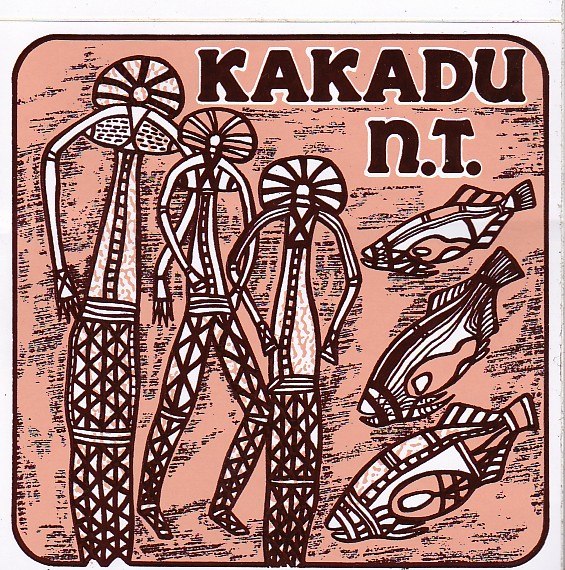
I could hear the egregious Swiss voice saying, ‘What else could they be but aliens!’ The answer Erich is artistic license. Check with Salvador Dali about watches!
‘First Footprints’ is also very informative about rock art, though it is never enough to satisfy me. I wanted more detail about the cosmology and less ‘Isn’t it great!’ expostulations from our guides. While I am carping, I would also have liked more about the social organization that underlay the art, the fish farming, the trade, and so on. Though perhaps we just don’t know, though surely everyone at the ABC knows how to speculate with pompous authority, or is that skill confined only to the News department.
The URL is http://www.abc.net.au/tv/firstfootprints/
